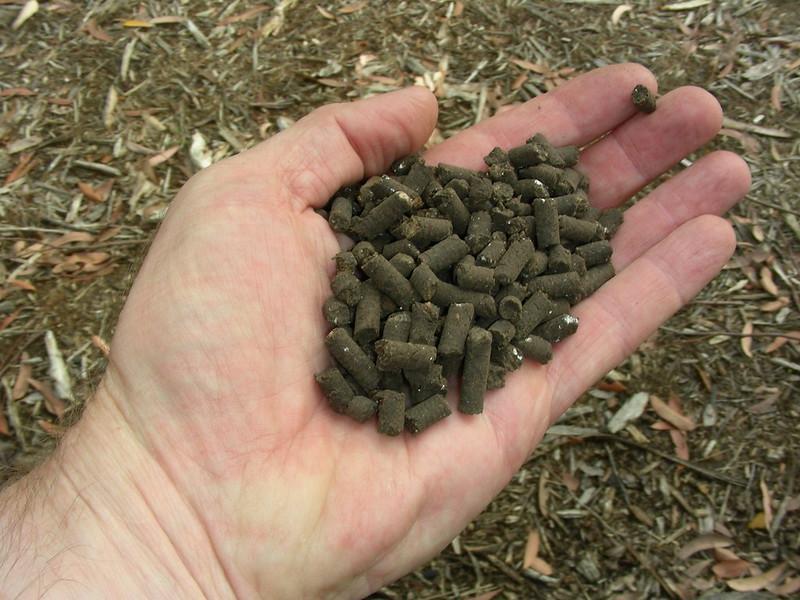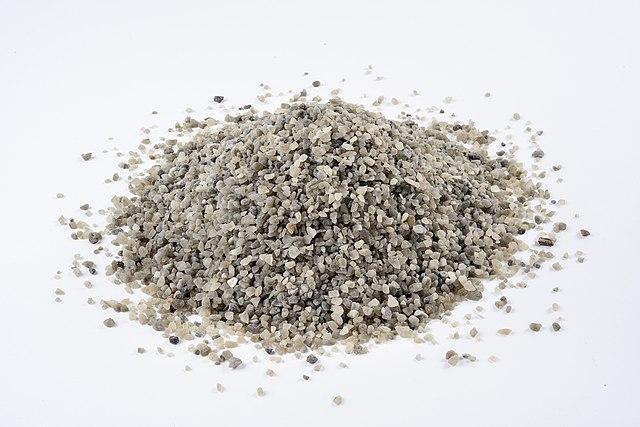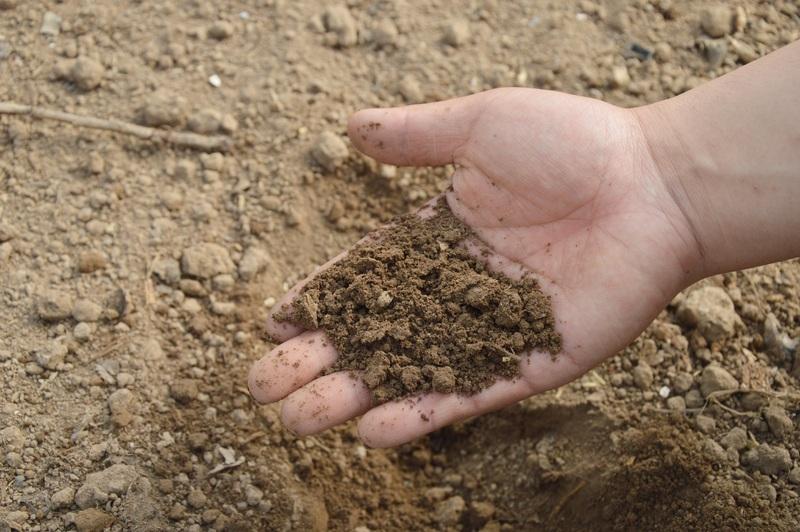It doesn’t matter if you’re trying to grow prize-winning pumpkins or make your yard look better: your plants need to be fed. Healthy, well-nourished plants are the foundation of beautiful lawns and gardens. And this is where fertilizers come into play. You can find many fertilizers at your local nursery or gardening store. However, there is a problem! Read on and find out what do the three numbers on fertilizer mean.

The three digits on the label of every fertilizer show the N-P-K ratio of the product.
While nurseries and gardening centers are lovely places to visit, they also have the potential to be extremely overwhelming, particularly for inexperienced gardeners. In addition, your head might feel like it’s going to blow up from the mind-boggling selection of fertilizers offered in such places. For instance, what exactly do the digits on fertilizer packages stand for? And does it matter which one you choose for your lawn or garden?
The three digits printed on the packaging of fertilizers represent the nutrient or NPK ratio. The first number denotes the amount of nitrogen (N), the second is the amount of phosphorus (P), and the third represents the amount of potassium (K). These three nutrients are necessary for maintaining the health of plants and grass.
Let’s get started by taking a more in-depth look at plant fertilizer numbers and how they can work to your advantage when caring for your plants.
RELATED: How Often Should I Fertilize My Lawn? A Quick & Easy Guide To Lawn Fertilization
Digging A Bit Deeper!

Understanding the numbers of a fertilizer bag can help you choose the best product for your plants.
The figures on the fertilizer package indicate the proportion (in terms of weight) of each of these three macronutrients that are present in that fertilizer. So, for instance, if you check the label on a bag of fertilizer and it says 10-5-10, the pack has 10 percent nitrogen, 5 percent phosphorus, and 10 percent potassium.
The carrier product accounts for the other 75 percent of the weight of the fertilizer bag. Using the fertilizer number, you can easily calculate the weight of any of these three nutrients in a fertilizer bag. Here is an illustration of that:
A Package of 8-0-24 fertilizer weighing 50 pounds.
- Calculate the weight of nitrogen by multiplying 50 to 0.08, which equals 4.
- Phosphate is not present in this bag of fertilizer at all. That is why it says zero in the middle.
- Calculate the weight of potassium in the bag by multiplying 50 to 0.24, which equals 12.
So, a bag of 8-0-24 fertilizer weighing 50 pounds has a total of 16 pounds worth of nutrients in it. This includes 4 pounds of nitrogen, 0 pounds of phosphate, and 12 pounds of potash. This would leave us with a filler weight of 34 pounds.
What Do Different Nutrients Do?
Gardeners who have a solid understanding of the NPK values and the nutrients they stand for are in the best position to choose fertilizers that are suitable for the requirements of their plants. However, before we get into that, let’s take a quick look at what each of these three macronutrients contributes to the overall health of your plants.
Nitrogen

Nitrogen is regarded as the most crucial element in promoting plant growth.
Nitrogen promotes the growth of leafy plants. It is a part of chlorophyll and is responsible for maximizing the development of the plant’s shoots and leaves.
Lawns that are already established rely on it to continue growing and maintaining their green color throughout the year. Without sufficient nitrogen, growth will be stunted, and lawns and plants will become yellow.
However, if there is excess nitrogen in the soil, blooming and fruit-bearing plants will direct their energy toward vegetative development rather than producing blooms and fruit.
Nevertheless, if you use a fertilizer with a high nitrogen ratio, your plants will develop a fuller and more robust canopy.
RELATED: How To Correctly Use Potash On A Lawn For The Best Results?
Phosphorus

Phosphorus addition to low-phosphorus soil enhances root development and winter hardiness.
On the other hand, phosphorus is necessary to divide the cells and form new plant tissue. Therefore, a phosphorus boost can benefit annual flower beds, fruiting plants like tomatoes, strawberries, and newly planted seedlings.
It encourages healthy root formation and establishment and is utilized in strategies that stimulate the production of fruit and flowers. Phosphorus deficiency results in stunted root growth as well as a lack of blooms and fruit.
If you’re laying sod or sowing grass seed, this is an essential macronutrient since it helps your lawn create a robust root system that will keep it alive through droughts.
However, if the soil already contains an adequate amount of phosphorus, then adding any more of it will do more harm than good.
Potassium

Potassium nutrition is critical for continually increasing crop productivity.
The majority of the metabolic reactions that take place in plants require potassium. It maintains the plants’ health and stability while assisting in the regulation of root and top growth. The amounts of potassium in a plant’s soil also have an effect on the plant’s hardiness and vigor.
Even though most soils contain some naturally occurring potassium, it might not be adequate for some plant species. Potassium acts as a trigger for certain enzymes in plants and helps regulate the uptake of carbon dioxide through leaf openings.
In addition, it helps plants make better use of water and better withstand drought by promoting strong stems, well-formed blooms, rich fruits, and healthy roots.
Note: Some plant fertilizers may contain additional nutrients or micronutrients, but those won’t show up as an extra number on the NPK ratio. Instead, these will simply be listed on the back with ingredients.
Synthetic Vs. Organic Fertilizers

A study conducted at the University of Massachusetts found that synthetic chemical fertilizers release their nitrogen within 3 to 6 weeks (of which only 40-60% are actually usable by plants). In contrast, organic fertilizers release their nitrogen over the course of 15 weeks (of which an astounding 90% is usable by plants).
The figures in the NPK ratio are typically lower for organic fertilizers. This is because the percentages listed on the label are the quantities of nutrients instantly available and not the actual amount. Most of the nutrients in natural and organic fertilizers become available to grass a few weeks after application.
It takes a little time for the microorganisms in the soil to break down fertilizer nutrients before releasing them for use by plants. Although it could seem like a disadvantage, this is not at all a problem. Instead, it suggests that the nutrients are slowly released, acting as a slow-release fertilizer.
Organic products are expensive; however, considering that you will receive a greater quantity of nutrients over a longer time, you will find that they are well worth the additional investment.
RELATED: Solved! How Long Do Fertilizers Take To Work? | Liquid Vs. Granular Fertilizer
Fertilize Your Lawn With Compost
The best approach to ensure that plants develop to their full potential is to ensure that the soil is healthy and biologically active by incorporating compost into the garden on an annual basis. Compost is one of the best soil amendments since it contains a wide variety of nutrients necessary for plants’ growth and also serves as a fantastic food source for the beneficial bacteria that live in the soil.
However, there might be occasions when your plants require more nourishment, such as when the nutrients that were initially included in the compost have been depleted or are no longer available. In such situations, a variety of synthetic fertilizers available on the market are simple to apply and do a fantastic job of nourishing the soil.
Dry Vs. Liquid Fertilizers

Dry granular fertilizers are usually best applied to outside areas and vast spaces.
The decision between liquid and dry fertilizer is more of a matter of personal preference; however, both have advantages and disadvantages.
For instance, I would suggest using a liquid fertilizer for small container plants that are kept outside or indoor house plants. This type of fertilizer allows you to dilute the concentration of the fertilizer with water (since excessive fertilization can be highly harmful to a plant), and it can penetrate the soil to reach the plant’s roots.
Granular fertilizers, on the other hand, are used more frequently outside and are typically less expensive than liquid fertilizers. As a result, it can be utilized for the cultivation of vast crops and has a longer shelf life. Most water-soluble plant fertilizers provide recommendations on the packaging for how to dilute the fertilizer.
Do not worry, though, if you cannot find this information on your fertilizer packaging. As a rule of thumb, a dilution of half to quarter concentration is advised, which is equivalent to approximately half a teaspoon of product per gallon of water.
Test The Soil
Check to see if your garden actually requires fertilizer before you go and start throwing it all over your lawn. Also, when determining which fertilizer to use, having your soil analyzed is the way to go. The soil test results will indicate which fertilizer grade is most suited for your needs. Along with the report, you will receive a maintenance note with recommendations for adding additional nitrogen to lawn and garden crops.
You’ll want to double-check this before you go shopping so that you can be sure to look for the right kind of fertilizer. The following are a few examples of typical grades of fertilizers that are recommended for lawns and gardens:
- 8-0-24
- 5-10-5
- 5-10-10
- 10-10-10
- 6-6-18
So, Which Fertilizer Should I Use On My Lawn?

Some nutrients, such as phosphorus, do not need to be added every time you fertilize.
Similar to the nutrition labels on the foods we eat, the three numbers separated by hyphens on fertilizer packages tell consumers of the product’s nutritional value for plants. You can use a perfectly balanced fertilizer, such as one with the ratio of 10-10-10, or one with the ratio of 15-30-15, depending on your plants’ needs.
You may not need to add some nutrients, like phosphorus, to the soil every time you fertilize because they stay in the soil for long periods. Therefore, before you add anything to your lawn or garden, it is imperative that you have the soil tested.
If this is not done, you will not have any idea of where you are beginning or what your soil requires or does not require.
Plants Need More Than The “Big Three”
Most fertilizers only mention the ratio of macronutrients, i.e., nitrogen, phosphorus, and potassium, on their packaging. However, there is a chance you might also find a reference to micronutrients on the packaging of some fertilizers.
It is usually the case with organic fertilizer. This indicates that the fertilizer mix contains trace amounts of other naturally occurring elements such as iron, manganese, boron, chlorine, copper, molybdenum, and zinc. There are ten different types of micronutrients that are necessary for the growth and development of plants.
Fertilizers may contain all or some of these trace elements. Conducting a soil test is the most effective method for determining which essential components are missing from your soil. The levels of micronutrients included in fertilizer are so low that it can be difficult to precisely detect them. That does not make them any less relevant, though. They continue to play an essential role in the expansion and maturation of the grass.
Apply Fertilizer Correctly

Try to use a fertilizer spreader machine to apply fertilizer to your lawn.
Have you ever come across a lawn that appears to be striped with a variety of different colors? This was presumably brought on by the application of fertilizers in the incorrect manner. Spreading nutrients out in an even manner is necessary if you want your plants to develop at the same rate and maintain the same hue.
To ensure uniform distribution, you can use a fertilizer spreader. The cyclone and drop spreaders are two of the most common types of spreaders utilized on lawns.
When spreading the fertilizer, you should ensure that you overlap the pattern you are spreading by applying half of the material in one way and the remaining material in a reverse manner. Moreover, breaking up any clumps that may have formed in the fertilizer is important, as this will prevent the spreader from becoming blocked.
Final Thoughts
As we’ve seen in this article, fertilizing your grass is an essential component of effective lawn or garden maintenance. First, however, you must ensure that you use the correct fertilizer at the appropriate time and in the appropriate concentration. Unfortunately, knowing how to select the appropriate fertilizer for your garden can be challenging.
So, it might be helpful to conduct a soil test first in order to establish which nutrients are missing from your soil. In addition, having an awareness of the N-P-K ratio, the requirements of the plant, and the benefits and drawbacks of the various types of fertilizers may equip you to make the best choice. Happy Gardening!
Frequently Asked Questions (FAQs)
What Is A Good NPK Ratio?
According to the findings of several studies, the optimal NPK fertilizer ratio of macronutrients for flowering plants is 3-1-2. However, keep in mind that this needs to be changed to account for the nutrients already present in the soil.
Why Is The NPK Ratio Important?
The three digits on fertilizer signify the value of plants’ three macronutrients. The letters NPK stand for nitrogen, phosphorus, and potassium, three of plants’ most vital nutrients. Micronutrient deficiency reduces the health and productivity of crops and may cause strange visual symptoms to manifest.
How Do You Calculate NPK Fertilizer Ratio?
To calculate a fertilizer ratio for a recommendation of 3 pounds of nitrogen, 1 pound of phosphate, and 1 pound of potash, divide the weight of each of the three nutrients (3 pounds, 1 pound, and 1 pound) by the weight of the nutrient that has the lowest weight.
This will give you the fertilizer ratio. Therefore, the fertilizer ratio of 3-1-1 is the one that corresponds most closely to this suggestion.
What Is The NPK Of Urea?
With the largest percentage of nitrogen(about 46 percent), urea is the most valuable nitrogenous fertilizer currently available on the market. It is not pricey and has an NPK ratio of 46-0-0, which stands for nitrogen, phosphorus, and potassium. Urea is utilized extensively within the agriculture sector as an additive for animal feed and fertilizer.
Which Fertilizer Is Best For Fruiting?
Fruit plants favor fertilizers with high nitrogen content. However, as long as the fruit trees are small, an organic fertilizer coupled with compost or mulch is preferable. Only use a synthetic nitrogen fertilizer once the plants have reached maturity and you have determined that you need to boost the amount of fruit or crop yield.
Sources For Further Reading
Choosing Fertilizers for Home Lawns- University of Illinois Extension Service
The ABCs of NPK: A fertilizer guide – Oregon State University Extension Service
How to Calculate a Fertilizer Ratio – The Pennsylvania State University Extension Service
Fertilizer N-P-K Calculator – Agricultural & Environmental Services Laboratories, University of Georgia
Editor’s Recommendations
Rhizome & Stolon Grasses: What Are They & Why Are They Amazing?
How To Remove Grass From A Yard To Start A New Garden? A Comprehensive Guide
Why Is My New Sod Turning Brown | How To Keep New Sod From Turning Brown







